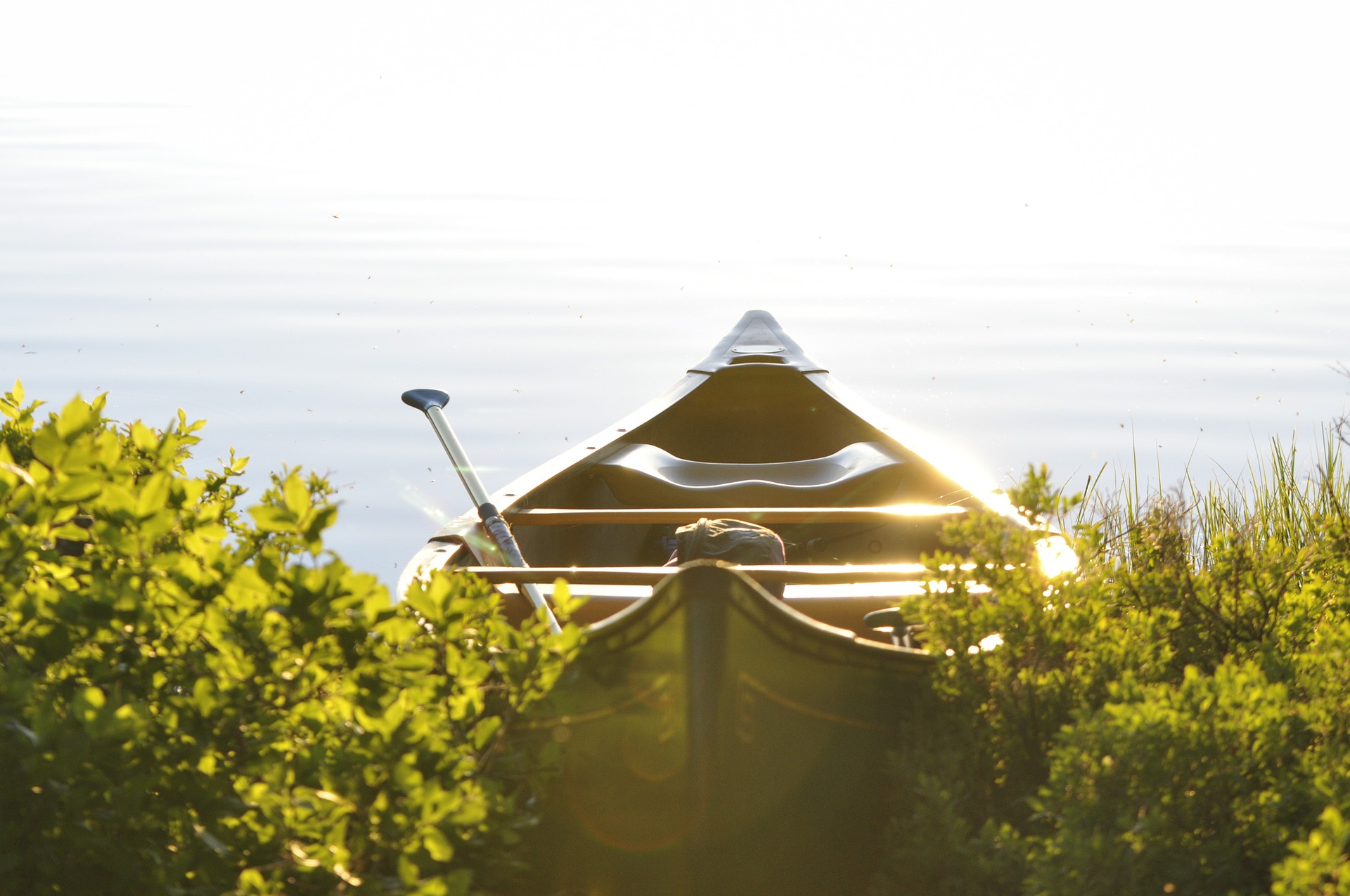Canoe paddles come in a wide array of materials and sizes, but perhaps one of the more intimidating options is the bent or spoon-bladed paddle.
In my years as a camp counselor, tossing kids appropriately-sized paddles and lifejackets became second nature, but it took me years to finally try out a bent canoe paddle.
Classic canoe paddles are totally symmetrical, and therefore reversible. They work equally well pulling or pushing, and there’s no need to keep track of which way the face is oriented. Bent or spoon-bladed canoe paddles are designed for more powerful and efficient strokes, but in only in one direction. Bent paddles use an asymmetric design that helps out in long flatwater paddles, but can be tricky to handle in fast-moving water.
To put it simply, experienced paddlers going for long, straight hauls can benefit from paddles designed to go in straight lines efficiently. Newer paddlers, or those paddling swift rivers or big water are advised to stay with the classic symmetrical design.
Table of Contents
Benefits of Bent and Spoon-Bladed Paddles
Bent paddles are designed to do one thing: go in a straight line with maximum speed, using minimum effort.
Paddling Efficiently
The bend is typically five to fifteen degrees off of direct alignment with the shaft.
Bending the blade relative to the paddle changes how the blade interacts with the water. You can exert the most force on the water when the blade is oriented straight up and down in the water.
Traditional paddles hit vertical alignment right at the beginning of the paddle stroke, as the paddle enters the water. It’s easy to have the blade start digging in and tilting off vertical before the whole blade is even in the water, wasting the most productive portion of the stroke.
Bent (or spoon-bladed) paddles delay the instant of vertical orientation, of maximum useful paddle force, until later in the stroke. This lets the paddler fully submerge the blade, and get moving on their stroke, without wasting the crucial moment.
It also lets the full muscular expression develop, involving your arms, shoulders, core, hips, and legs. Traditional paddles can hit that critical moment while you’re still just getting your arms moving, and haven’t yet fully engaged your core and legs.
On any length of paddle, getting more of your body involved will help to reduce fatigue and wear and tear on any particular muscle group by sharing the load.
Change of Pace
Whenever you paddle, you should have a spare paddle along. The ratio I was taught as a camp counselor was at least one spare paddle on every trip, and a minimum of one spare paddle per four boats on our small river trips. In more challenging situations, I’d knock that down to one per two boats.
Bent and spoon-bladed paddles load up fully in the water at a different point in the paddle stroke. This in turn means that these paddles engage your muscles differently than a classic canoe paddle.
On a long flatwater trip, bringing a different style paddle as a backup can help reduce fatigue by offering a change of pace partway through the day.
The grips on these paddles also differ from classic straight-blade paddles. They’re often much more sculpted, as they don’t have to be particularly comfortable to grab from the opposite side. The differences in grip / handle shape between bent and classic canoe paddles can offer relief if you run into trouble with blisters or hotspots on a long paddle.
It also always pays to bring some moleskin or blister dressings on any long paddle, in addition to your normal first aid kit. Paddling with raw hands really takes away from the enjoyment of the experience.
Drawbacks of Asymmetric Paddles
Any sort of asymmetry in paddles introduces the possibility of using them wrong in a new way that wasn’t possible with symmetric paddles. They also can be tricky to keep track of when doing quick course corrections in swift water, and can be hazardous when bracing as well.
Doing it Wrong
I can’t count the number of times I yelled “do a helicopter” at customers when I volunteered at kayak demos for my friend’s family shop growing up. That was with spoon-bladed kayak paddles, but the same opportunity exists to accidentally grab the paddle backwards.
Luckily, the odds of using a canoe paddle backwards are somewhat reduced by the one-way grip styles commonly used. Rather than the ubiquitous T-grip handles common with classic canoe paddles, bent-shaft paddles typically feature more comfortable, stylized grips that encourage you to grab it the right way around.
Still, it’s not necessarily intuitive that the bend should slant down and away from the paddler. I managed to use a bent paddle incorrectly for three hours before noticing the grip clearly favored the other direction my first time.
Tougher Steering
One of my more favorite ways to steer a canoe as a kid was to stick my paddle in alongside the boat, with the blade parallel to the direction we were traveling. I’d then rudder the boat left and right by levering the paddle against the gunwales of the canoe.
That’s not possible with a bent-shaft paddle, or at least not easily so.
When steering needs to be quick and confident, as in a fast-moving river, opt for a symmetric, classic paddle. Pry and draw strokes (read the Intermediate Canoeing Guide if you don’t recognize those terms) in particular are designed to hop your boat sideways in a hurry, and rely on the paddle and blade being vertical when they enter the water.
You also don’t want to be trying to keep track of which way your blade is bending if you need a quick, maximum effort course correction.
Bracing Challenges
Bracing, smacking the flat of your paddle blade on the surface of the water to steady yourself, depends on your ability to get your blade parallel to the surface completely by muscle memory.
When you need to brace, you don’t have time to think. It needs to be totally automatic, and asymmetric paddles make that muscle memory much more difficult to develop.
Even for the expert paddler, it may well require an extra step to rotate the paddle around to get the grippier side down on the water.
If you expect to need your bracing skills, or are newly learning to brace, keep it easy and go for the classic design paddle.
Summary
Asymmetric paddles are great for experienced paddlers on long flatwater hauls, especially as a backup paddle to change up your muscle group activation midway through.
They’re really not great for newer paddlers, or experienced paddlers on rough or swift water.
If you’re just getting started, or looking for a refresher, head on over to my Complete Canoe Guide article series and keep on reading.

